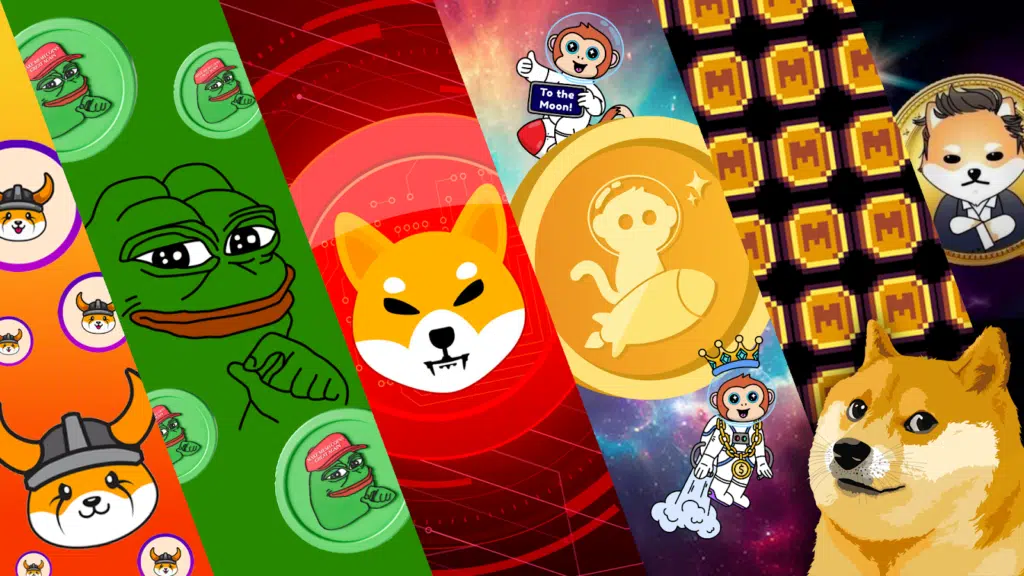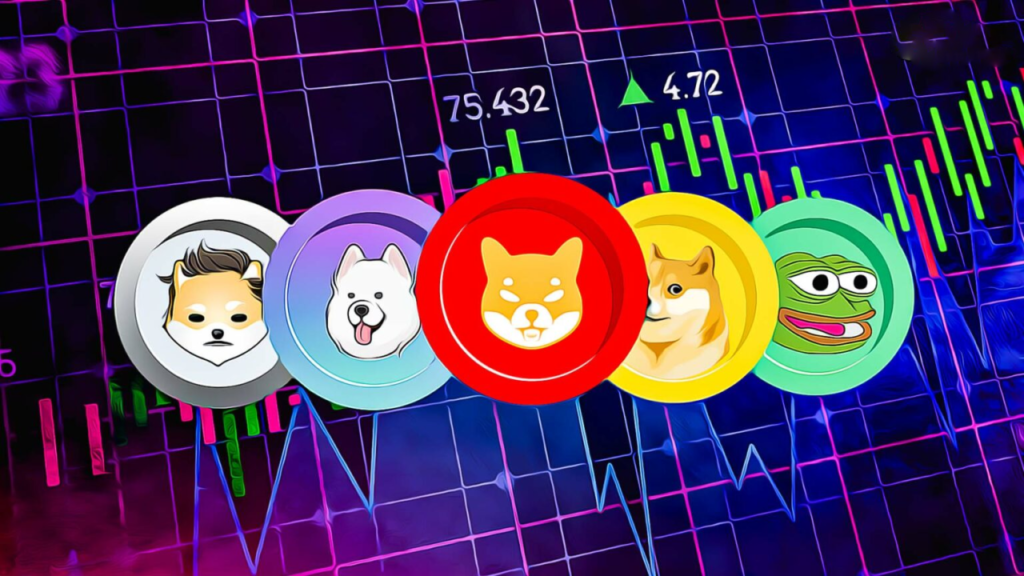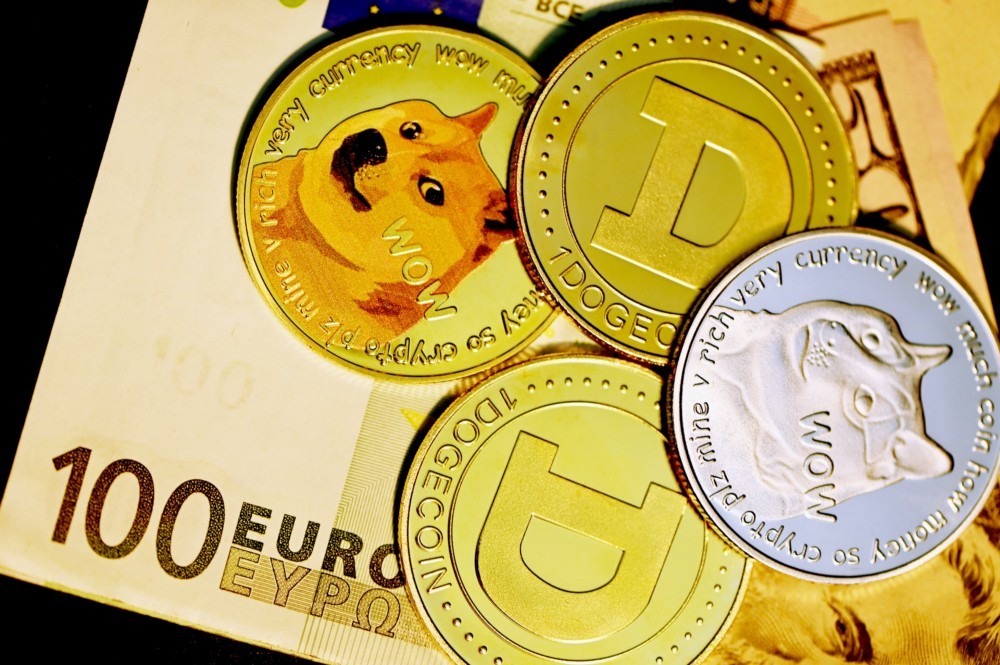
The Rise of Meme Coins: A New Crypto Investment Strategy
Cryptocurrency has evolved from a niche concept to a mainstream financial asset. Bitcoin and Ethereum continue to dominate, but there’s a rising trend that’s capturing attention: meme coins. These cryptocurrencies, based on internet memes or viral trends, have become popular among investors, celebrities, and online communities.
However, the big question remains: should meme coins be part of your crypto investment strategy? Is it a passing fad or a legitimate investment opportunity? Let’s explore the rise of meme coins, their impact, and their role in a well-rounded investment strategy.
What Are Meme Coins?
Meme coins are cryptocurrencies inspired by popular memes or internet phenomena. Unlike Bitcoin or Ethereum, these coins often lack clear use cases or underlying technology. Their value typically derives from community hype, social media trends, and speculative trading.
Some notable meme coins include:
- Dogecoin: Launched as a joke in 2013, Dogecoin features the “Doge” meme of a Shiba Inu dog. Over time, it gained a large following and is now one of the most recognized cryptocurrencies.
- Shiba Inu (SHIB): Known as the “Dogecoin killer,” Shiba Inu shares similar meme-based origins and has garnered a substantial fanbase.
- Pepe Coin: Based on the “Pepe the Frog” meme, this coin has attracted meme enthusiasts across the internet.
- Bonk: A newer entry that gained traction through social media platforms like Twitter and Reddit.
While these coins started as jokes, some have grown into serious market players. Dogecoin and Shiba Inu, for instance, now have multi-billion dollar market caps.
Why Are Meme Coins Gaining Popularity?
Several factors contribute to the growing popularity of meme coins. Understanding these reasons helps explain why they’ve become a significant part of many investors’ crypto portfolios.
- Low Entry Cost: Many meme coins are priced much lower than Bitcoin or Ethereum. This low cost makes them accessible to a wider range of investors, particularly those with limited capital. For instance, Dogecoin was once priced at a fraction of a penny, attracting millions of retail investors.
- Celebrity Endorsements: The influence of high-profile figures like Elon Musk has been a major driving force. Musk’s tweets about Dogecoin often cause its price to surge, demonstrating the impact of celebrity endorsements on the market.
- Social Media Buzz: Meme coins thrive on platforms such as Twitter, Reddit, and Telegram. The viral nature of internet memes makes it easy for these coins to gain attention, and social media communities play a crucial role in their rise.
- FOMO (Fear of Missing Out): The explosive growth of meme coins in recent years has fueled FOMO among investors. Many fear missing out on the next big cryptocurrency, leading them to invest in meme coins at the peak of their popularity.
- Community Power: The strength of a meme coin’s community often determines its success. Coins with passionate, active communities tend to generate higher trading volumes, propelling their prices upwards.
Meme Coin Market: A Growing Trend
The meme coin market has seen substantial growth, with a market cap exceeding $130 billion in 2024. Dogecoin alone has a market cap of more than $60 billion, and Shiba Inu follows closely behind at around $14 billion. These market caps demonstrate the increasing influence meme coins have in the broader cryptocurrency space.
Despite this growth, meme coins remain speculative investments. Unlike Bitcoin, which serves as a store of value, or Ethereum, which powers decentralized applications, meme coins often lack utility. This makes them riskier to include in a long-term crypto investment strategy.
Table: Market Cap of Leading Meme Coins (2024)
| Meme Coin | Market Cap (Billion USD) | All-Time High (USD) | Popularity Factor | Major Endorsements |
|---|---|---|---|---|
| Dogecoin | 60 | $0.73 | High | Elon Musk, Reddit community |
| Shiba Inu | 14 | $0.000088 | High | “Dogecoin Killer” sentiment |
| Pepe Coin | 3 | $0.00002 | Medium | Online meme communities |
| Bonk | 2 | $0.000009 | Medium | Social media hype |
As shown in the table, meme coins have achieved impressive valuations, despite lacking the robust technological foundations that support other cryptocurrencies. Their value primarily stems from online trends, social media, and speculation.

The Risks of Meme Coins: Volatility and Speculation
While meme coins have the potential for significant gains, they also come with considerable risks. Investors must fully understand these risks before incorporating meme coins into their crypto investment strategy.
- Extreme Volatility: Meme coins are notorious for their price swings. Their value can surge within days, only to experience significant losses shortly afterward. For example, Dogecoin saw a 1,300% price increase from January to May 2021, followed by a sharp decline.
- Lack of Fundamental Value: Unlike Bitcoin or Ethereum, meme coins don’t have established use cases. Without underlying technology or utility, they are driven mostly by market speculation, which makes them unstable and high-risk investments.
- Pump and Dump Schemes: The meme coin market is particularly vulnerable to “pump and dump” schemes, where traders artificially inflate the price before selling off their holdings. This leaves late investors with losses, making meme coins unreliable for long-term strategies.
- Rug Pulls: Some meme coins are prone to rug pulls, where the creators abandon the project, leaving investors with worthless tokens. This is an additional risk when investing in meme coins, especially if you’re following the crowd or acting impulsively.
- Regulatory Risks: As governments begin to regulate cryptocurrencies more heavily, meme coins may face increased scrutiny. Regulatory actions could impact the market value of meme coins, making them more unpredictable in the context of a crypto investment strategy.
Meme Coins and Their Role in a Crypto Investment Strategy
Meme coins are undeniably speculative investments, and they play a different role compared to more established cryptocurrencies. However, they can still be incorporated into a diversified crypto investment strategy. Here’s how meme coins might fit into your overall investment approach.
How Meme Coins Fit into Your Crypto Investment Strategy
- High Risk, High Reward: Meme coins can offer substantial short-term returns, but they also come with high volatility. Consider limiting your exposure to meme coins to a small portion of your portfolio while maintaining more stable, long-term investments like Bitcoin and Ethereum.
- Diversification: Diversifying your portfolio is key in any investment strategy, and the same goes for crypto investments. Meme coins can add an element of speculation to your portfolio, but ensure that your core holdings are in projects with solid use cases and long-term potential.
- Timing the Market: Meme coins often gain value due to social media trends or celebrity endorsements. As a result, timing plays an important role. Stay attuned to social media trends and be ready to take advantage of opportunities before a meme coin becomes overhyped.
- Community Engagement: The success of meme coins is driven by their communities. When evaluating meme coins, look for projects with strong, engaged communities. These coins are more likely to sustain their value due to continued interest and trading activity.
Example: The Rise of Dogecoin
Dogecoin serves as an example of the influence that social media and celebrity endorsements can have on meme coin value. In 2021, Elon Musk’s Twitter activity led to a surge in Dogecoin’s price, which rose by over 1,300% in just five months. This shows the impact of hype and online sentiment on meme coins and highlights their potential as a short-term speculative investment.
How to Approach Meme Coin Investment
If you’re interested in adding meme coins to your crypto investment strategy, here are a few tips:
- Start Small: Given their volatility, meme coins should make up only a small part of your portfolio. Never invest more than you can afford to lose.
- Do Your Research: Not all meme coins are created equal. Investigate the project behind the coin, its community, and its overall market potential. Avoid coins that lack transparency or a clear purpose.
- Avoid FOMO: Meme coins can create a sense of urgency, but it’s important to remain level-headed. Stick to your investment strategy and avoid making decisions based solely on hype.
- Consider Long-Term Risks: While meme coins can offer quick returns, they are not suitable for long-term investments. Ensure that your strategy includes solid, established cryptocurrencies with long-term growth potential.
Meme Coins in Your Crypto Investment Strategy
Meme coins have emerged as a significant part of the cryptocurrency landscape, attracting millions of investors with their community-driven hype and speculative potential. While they can offer impressive short-term gains, they come with high risks due to volatility, lack of utility, and market manipulation.
When including meme coins in your crypto investment strategy, approach them with caution. Diversify your portfolio and limit your exposure to meme coins while maintaining a stable core of more established assets like Bitcoin and Ethereum. With careful research, strategic timing, and risk management, meme coins can play a role in your broader crypto investment strategy, but they should be approached as high-risk, speculative investments.

A Comparison of Meme Coins vs. Traditional Cryptocurrencies
When comparing meme coins to traditional cryptocurrencies, it’s important to understand their distinct characteristics. While both types of digital assets operate on blockchain technology, their purposes, market usage, and long-term potential can vary greatly. In this section, we’ll dive into the differences between meme coins such as Dogecoin and Shiba Inu and well-established cryptocurrencies like Bitcoin and Ethereum, offering insight into their underlying technology, usage, and future outlook.
1. Underlying Technology
- Traditional Cryptocurrencies:
- Bitcoin: Bitcoin was the first cryptocurrency, created in 2009 by an anonymous entity known as Satoshi Nakamoto. It operates on a Proof-of-Work consensus mechanism, meaning miners solve complex mathematical problems to validate transactions. This is known for its security and decentralized nature.
- Ethereum: Ethereum, launched in 2015 by Vitalik Buterin, also originally used the Proof-of-Work mechanism but transitioned to Proof-of-Stake with Ethereum 2.0. Ethereum enables smart contracts, decentralized applications (dApps), and decentralized finance (DeFi), making it far more versatile than Bitcoin.
- Meme Coins:
- Dogecoin: Initially created as a joke, Dogecoin has evolved into one of the most recognized meme coins. It operates on the Proof-of-Work mechanism, much like Bitcoin, but has a much higher inflation rate due to its large supply. Dogecoin is primarily known for its fun, lighthearted image and has been endorsed by prominent figures such as Elon Musk.
- Shiba Inu: Like Dogecoin, Shiba Inu is a meme coin that gained popularity due to its community-driven nature. It operates on the Ethereum blockchain, making use of its smart contract capabilities, but lacks the same technical foundation as Ethereum’s main network. Shiba Inu’s primary goal is to position itself as an alternative to Dogecoin, with a significant focus on fostering community engagement.
2. Market Usage and Purpose
- Traditional Cryptocurrencies:
- Bitcoin: Bitcoin is widely regarded as the first digital gold and has gained recognition as a store of value. It is primarily used for peer-to-peer transactions, store of value, and a hedge against inflation. Bitcoin’s market usage has grown significantly, and it is increasingly being adopted by institutional investors and recognized by governments as a legitimate asset class.
- Ethereum: Ethereum is a decentralized platform that enables smart contracts and dApps. It is used for creating decentralized financial systems, issuing tokens, running decentralized applications, and more. Ethereum has a vast ecosystem of decentralized projects, and its market usage goes beyond simple transactions, aiming to disrupt multiple industries, from finance to gaming.
- Meme Coins:
- Dogecoin: Initially created as a joke, Dogecoin has evolved into a popular meme coin used for tipping, donations, and some transactions. Its popularity is largely driven by social media and community involvement. However, despite its widespread use for small-scale transactions, Dogecoin’s actual adoption for practical use cases is still limited compared to Bitcoin or Ethereum.
- Shiba Inu: Shiba Inu markets itself as an “experiment in decentralized community building” and has developed its own ecosystem with features like ShibaSwap and various tokens within its network. However, its usage is still mostly speculative, driven by its strong community support. While it has some decentralized finance (DeFi) applications, it lacks the broader practical use that Ethereum offers.
3. Long-Term Potential
- Traditional Cryptocurrencies:
- Bitcoin: Bitcoin is seen as a long-term store of value and a hedge against traditional financial markets. Its fixed supply of 21 million coins means it is not subject to inflation, and it has become a favorite among institutional investors. Bitcoin’s price has remained volatile in the short term, but it has shown strong long-term growth since its inception, positioning it as a potential future reserve currency.
- Ethereum: Ethereum’s long-term potential lies in its ability to support a vast range of decentralized applications and smart contracts. The network’s shift from Proof-of-Work to Proof-of-Stake aims to increase scalability and reduce energy consumption, positioning Ethereum as a long-term leader in the blockchain space. It is widely regarded as the backbone for decentralized finance and other applications in the blockchain ecosystem, making its future prospects robust.
- Meme Coins:
- Dogecoin: While Dogecoin has had significant short-term growth, its long-term potential remains uncertain. Dogecoin lacks the technological advancements and practical use cases that Bitcoin and Ethereum offer. Although it has a strong, passionate community, Dogecoin’s inflationary supply (with no maximum limit) and lack of development in its core technology pose challenges for its future. Without major changes or improvements, Dogecoin may remain a speculative asset.
- Shiba Inu: Shiba Inu’s long-term potential is similarly speculative. While it has gained popularity due to its meme status and community support, its future growth depends on the continued expansion of its ecosystem and its ability to differentiate itself from other meme coins. The Shiba Inu project has made strides with its decentralized exchange, but it lacks the level of technological sophistication and adoption seen in Bitcoin or Ethereum.
4. Market Capitalization and Price Volatility
- Traditional Cryptocurrencies:
- Bitcoin: Bitcoin is the largest cryptocurrency by market capitalization, and its price volatility is significantly less severe than that of meme coins. The price of Bitcoin is largely driven by market demand, adoption, and its perceived role as a store of value.
- Ethereum: Ethereum, being the second-largest cryptocurrency, exhibits higher volatility than Bitcoin but remains relatively stable compared to meme coins. The price of Ethereum is influenced by the adoption of its smart contract platform and decentralized applications.
- Meme Coins:
- Dogecoin: Dogecoin has experienced significant price swings, often driven by viral events or social media trends. Its market capitalization can rapidly grow or shrink based on market sentiment, making it highly volatile and speculative.
- Shiba Inu: Shiba Inu has also experienced similar volatility, with large price increases fueled by community hype and social media influence. However, Shiba Inu’s market capitalization remains lower than Bitcoin and Ethereum, and its price can fluctuate significantly based on short-term trends and speculation.
5. Community and Social Media Influence
- Traditional Cryptocurrencies:
- Bitcoin and Ethereum: Both Bitcoin and Ethereum have large, dedicated communities of developers, investors, and advocates. These communities are focused on long-term growth, technological advancements, and adoption. The communities often engage in educational efforts and discussions around the development of blockchain technology, decentralized finance, and regulatory issues.
- Meme Coins:
- Dogecoin and Shiba Inu: Meme coins like Dogecoin and Shiba Inu are driven heavily by social media communities. The rise of Dogecoin is largely due to Elon Musk’s Twitter mentions, while Shiba Inu’s popularity is rooted in Reddit and other online forums. The passionate communities surrounding these coins often lead to rapid price increases, though these movements can be short-lived and driven by hype rather than solid fundamentals.
You Might Also Like
- How Inflation in 2025 Affects Your Daily Life and Interest Rates
- Why Gold Price Increasing in India? What’s Driving the Surge?
- Chill Guy Coin: The Future of Crypto or Just a Trend?
Conclusion
The comparison between meme coins and traditional cryptocurrencies reveals significant differences in terms of technology, market usage, and long-term potential. Meme coins like Dogecoin and Shiba Inu are highly speculative assets, driven by social media influence, community engagement, and the psychology of FOMO (Fear of Missing Out). They have limited practical use cases, and their long-term potential remains uncertain.
On the other hand, traditional cryptocurrencies like Bitcoin and Ethereum are founded on solid technological principles and have broader use cases. Bitcoin is considered a store of value and a hedge against inflation, while Ethereum powers decentralized applications and smart contracts, positioning itself as a leader in the blockchain space.
While meme coins might offer quick profits for short-term investors, traditional cryptocurrencies have established themselves as viable long-term assets in the financial ecosystem. When developing a crypto investment strategy, understanding these differences is crucial for making informed decisions based on risk tolerance, market trends, and individual financial goals.



